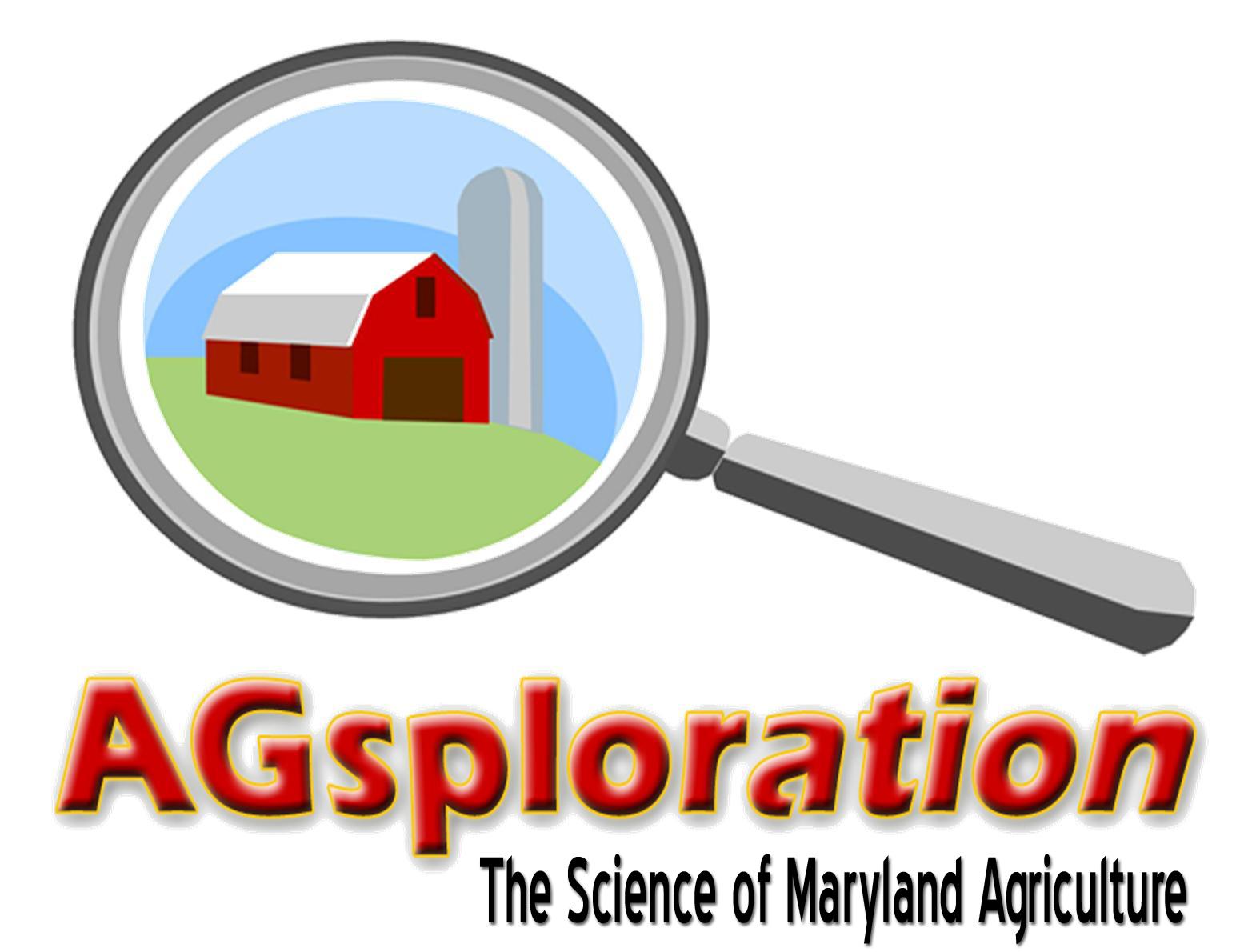AGsploration: The Science of Maryland Agriculture is a statewide curriculum designed to increase middle school student agriculture literacy and STEM (science, technology, engineering, and math) skills. The curriculum consists of 24 peer-reviewed lessons with experiential, hands-on activities; a teacher's guide; a pre-packaged materials kit; evaluation materials; and supplemental digital resources. Each lesson is aligned with the Next Generation Science Standards. Topics include animal agriculture, plant agriculture, agriculture and the environment and agricultural technology. The program was developed by the faculty of University of Maryland Extension with support from researchers and industry professionals.
The curriculum for AGsploration: The Science of Maryland Agriculture has reached more than 54,000 Maryland youth since 2010, and more than 500 teachers have been trained to utilize the curriculum.
